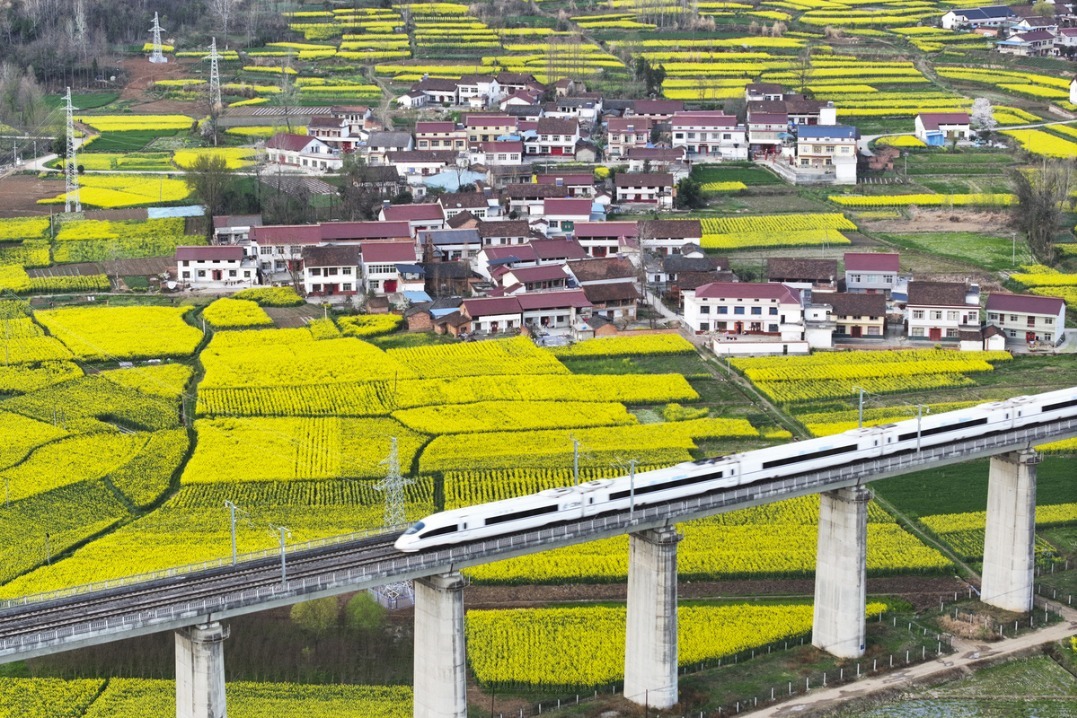China's contributions to the UN
By Nandini Dash | chinadaily.com.cn | Updated: 2021-10-29 16:18

The goal of the establishment of the United Nations was to have a balanced global relationship, curtailing hegemony and establishing peace and equality.
As has been said before, like a sleeping giant waking up, China has made one achievement after another since the founding of the PRC in 1949 and economic opening-up in 1978.
The recent history of Chinese achievement and alignment with UN standards are:
China is the second-largest contributor to the UN peacekeeping force.
As per the 2030 Sustainable Development Goal, China has uplifted all of its people from absolute poverty.
The most important thing is that China is continuously reforming based on its own principles. The aim of each and every welfare state is the well-being of its citizens.
The primary goal of the UN is to maintain international peace and security. Which refers to international cooperation on social, economic, and cultural development.
The UN stands for:
Eradication of poverty
The well-being of the world population
Quality education
Gender equality
Clean water and sanitation
Affordable and clean energy
Economic growth
Industry, innovation, and infrastructure
Reducing inequality
Sustainable development goals
China's share of the UN targets are:
China has lifted 100 million people from absolute poverty. While the World Bank specifies the poverty line at $1.90 per person per day, China has made it above the benchmark of $2.30 a day. Besides income, it focuses on living standards based on education, healthcare, and the environment or living condition.
China took two most important measures to curb COVID19: Stringent social restrictions and the construction of temporary medical facilities on war footage.
In addition, responding to the UN initiative, China contributed $50 million to the WHO and sent medical exports to 200 countries and regions in the form of masks, vaccines, etc.
According to World Education News Reviews, "China has now achieved universal participation in higher education". China is producing 8 million graduates every year. By 2030 the number is expected to multiply.
Universities are enhancing the model of education maintaining global standards. Two renowned universities Tsinghua and Peking are ascending in the global rankings of universities.
Just before the outbreak of the epidemic in 2019, the survey showed that within two decades the number of Chinese students studying abroad reached 900,000, the highest number of students enrolled in foreign countries.
In October 2021, the UN Secretary-General Antonio Guterres said, "Today, women's leadership is a cause, tomorrow, it must be the norm".
To match the concern, China's Outline of Women's Development in China (2021-2030) said, "By 2030, the policy of gender equality will be thoroughly implemented; women will have equal access to full life cycle health services, enjoy equal rights to education, equal economic rights and interests, and equal political rights."
China is working toward resolving its water scarcity issue. The World Bank's Board of Executive Directors approved a $100 million loan to improve rural water supply and sanitation services in Sichuan province through a public-private partnership.
China aims to meet 80 percent of energy needs through renewable sources by the year 2050. The China grid model has four aspects: Baseline, topmost efficiency, a large number of renewable sources, and low carbon. Currently, China uses 9.8 percent of non-fossil energy.
China's post-COVID-19 restoration of economic growth is slower yet has become an exemplary model for other economies.
The figures show that on a PPP basis China will become the largest economy in the coming decades.
A Harvard Business Review said that, the future of the Chinese economy lies in its innovation. In 2020, around 2.44 trillion yuan were invested in research and development. By April 2021, the highest number of unicorns registered was in technology, telecommunication, transportation, and logistics. In 2021, China's infrastructure grew by 2.9 percent.
China intends to redistribute wealth for common prosperity. The ‘aim is to boost the income of the poor, rationally adjust excessive income, and ban illegal income. The notion of "common prosperity" was laid down by the leadership of Mao Zedong, developed by Deng Xiaoping and is followed by the current leadership.
In parallel with the UN sustainable development goal, China has eliminated extreme poverty, energized climate actions and successfully tackled epidemic challenges, standing out as a global leader.
Still, there is a long way to go. From time to time challenges will crop up. Being a founding member of the UN, permanent member of the Security Council, China needs to be on the same path as the UN and be the impeccable nation of execution.
Nandini Dash is a writer based in India.
The opinions expressed here are those of the writer and do not necessarily represent the views of China Daily and China Daily website.
If you have a specific expertise, or would like to share your thought about our stories, then send us your writings at opinion@chinadaily.com.cn, and comment@chinadaily.com.cn.
























